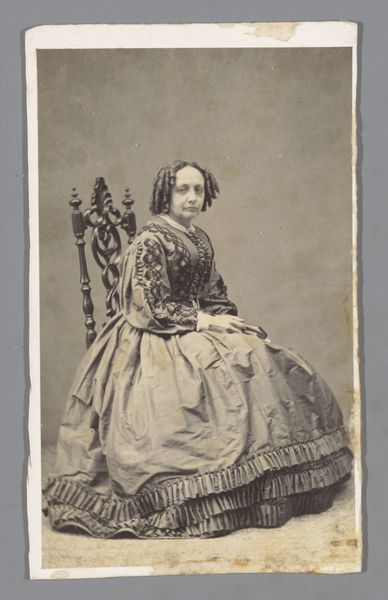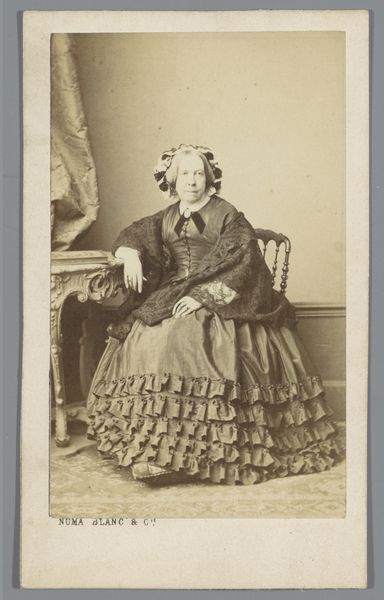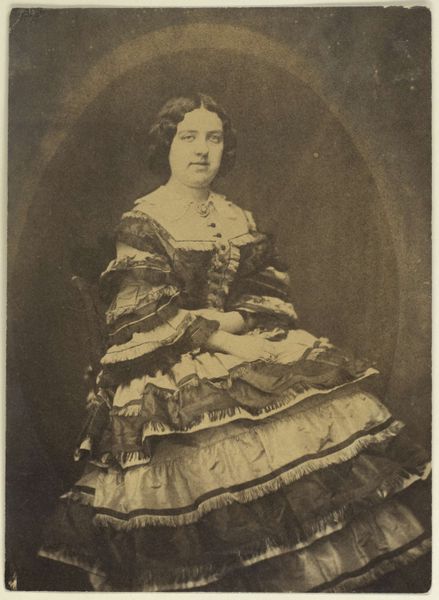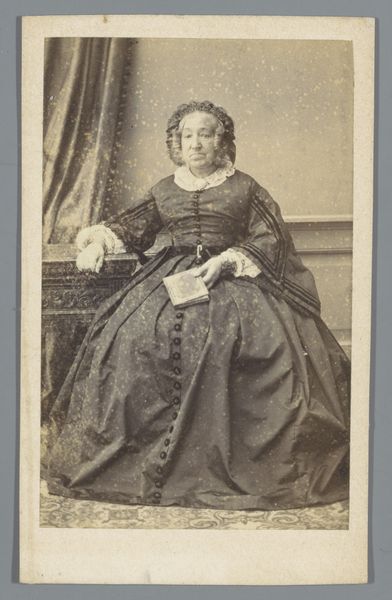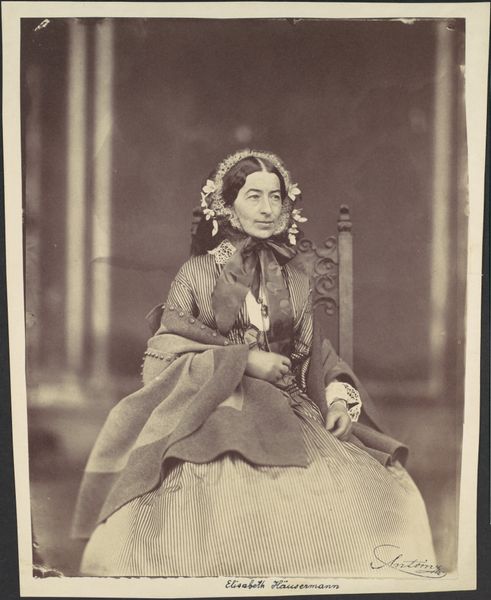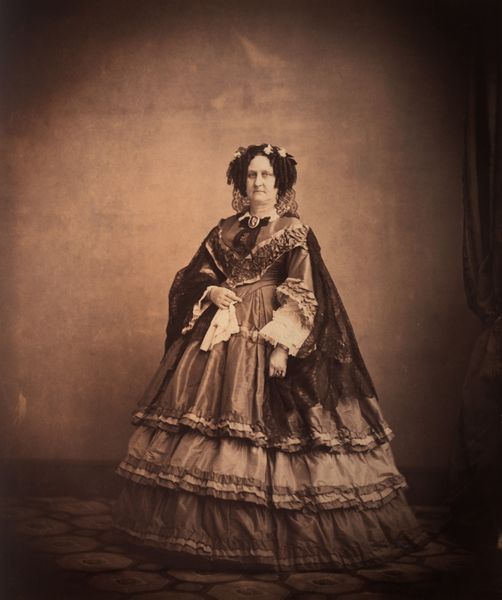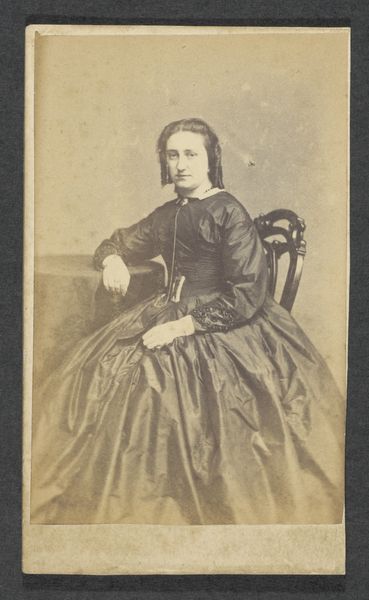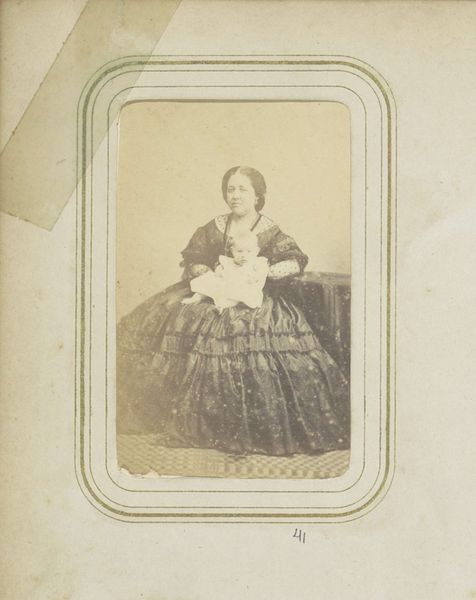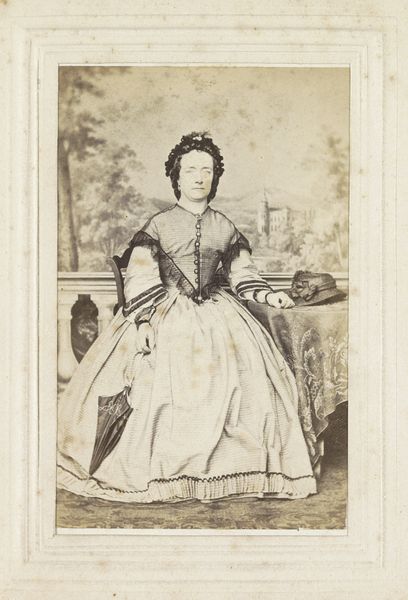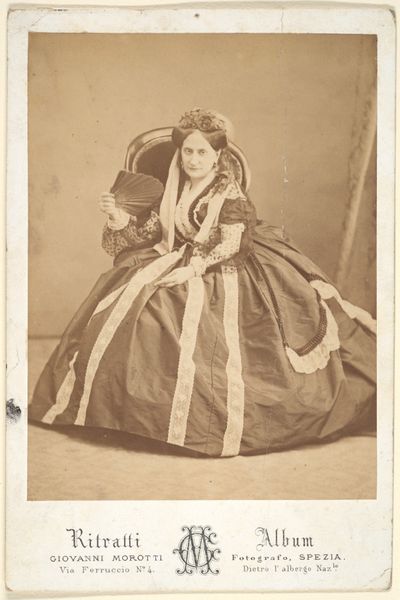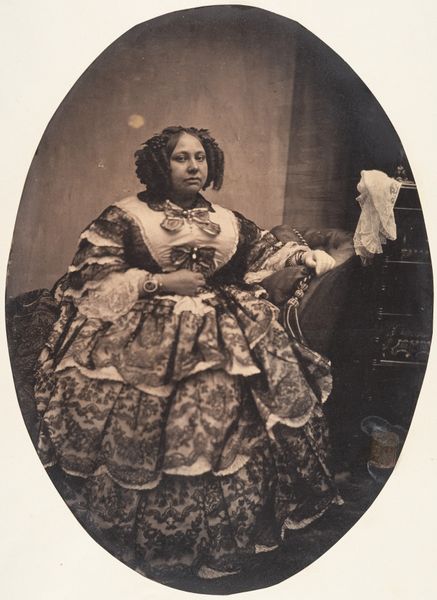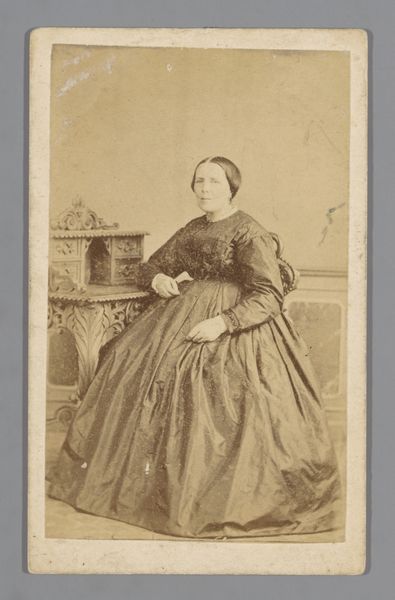
Dimensions: 23.8 x 21.2 cm. (9 3/8 x 8 3/6 in.)
Copyright: Public Domain
Curator: Here we have a fascinating daguerreotype from the mid-19th century, around the 1850s or 60s. It’s a portrait of a woman named Marie Antoine, née Woes. The piece is currently housed here at the Metropolitan Museum of Art. Editor: What strikes me immediately is the weight of this image, not literally, of course, but how heavy everything appears—the light, her gown, the mood itself. Curator: Indeed, the heaviness speaks volumes, doesn't it? Daguerreotypes, unlike modern photography, captured light and detail with incredible precision on a silvered copper plate, yet the process itself necessitated long exposure times, contributing to that very stillness you perceive. The "romanticism" is subtle, embedded more in the cultural mores surrounding portraiture. A display of status and character rather than explicit idealized beauty, it hints at social identity, family connections, and perhaps personal aspirations. Editor: That weight becomes almost symbolic then, representing the societal constraints of the era—almost palpable in her posture and expression. She is at once present, captured forever by the new medium, yet distant, shrouded in her finery. There’s also something dreamlike, perhaps that stillness you mentioned and the sepia tones… like a memory fading at the edges. Curator: Exactly. The very choice of such elaborate dress, the meticulous coiffure… everything emphasizes social roles. This portrait acts as a powerful symbolic declaration. While photography gradually democratized image-making, at this stage it very much participated in solidifying existing hierarchies. Marie, through the symbols carefully presented—dress, demeanor, posture—occupies a very defined position in the 19th-century social fabric. Editor: I suppose it speaks to the enduring allure of images—their ability to both record and mythologize. "Marie Antoine, geb. Woes", is so much more than a frozen moment of likeness. It is a coded artifact loaded with the anxieties and aspirations of the era. Thank you for sharing your insightful lens. Curator: It is in tracing how images reverberate that we keep those lines open, as you point out—connecting us to not just past lives, but the ongoing theater of symbols we continue to participate in.
Comments
No comments
Be the first to comment and join the conversation on the ultimate creative platform.
